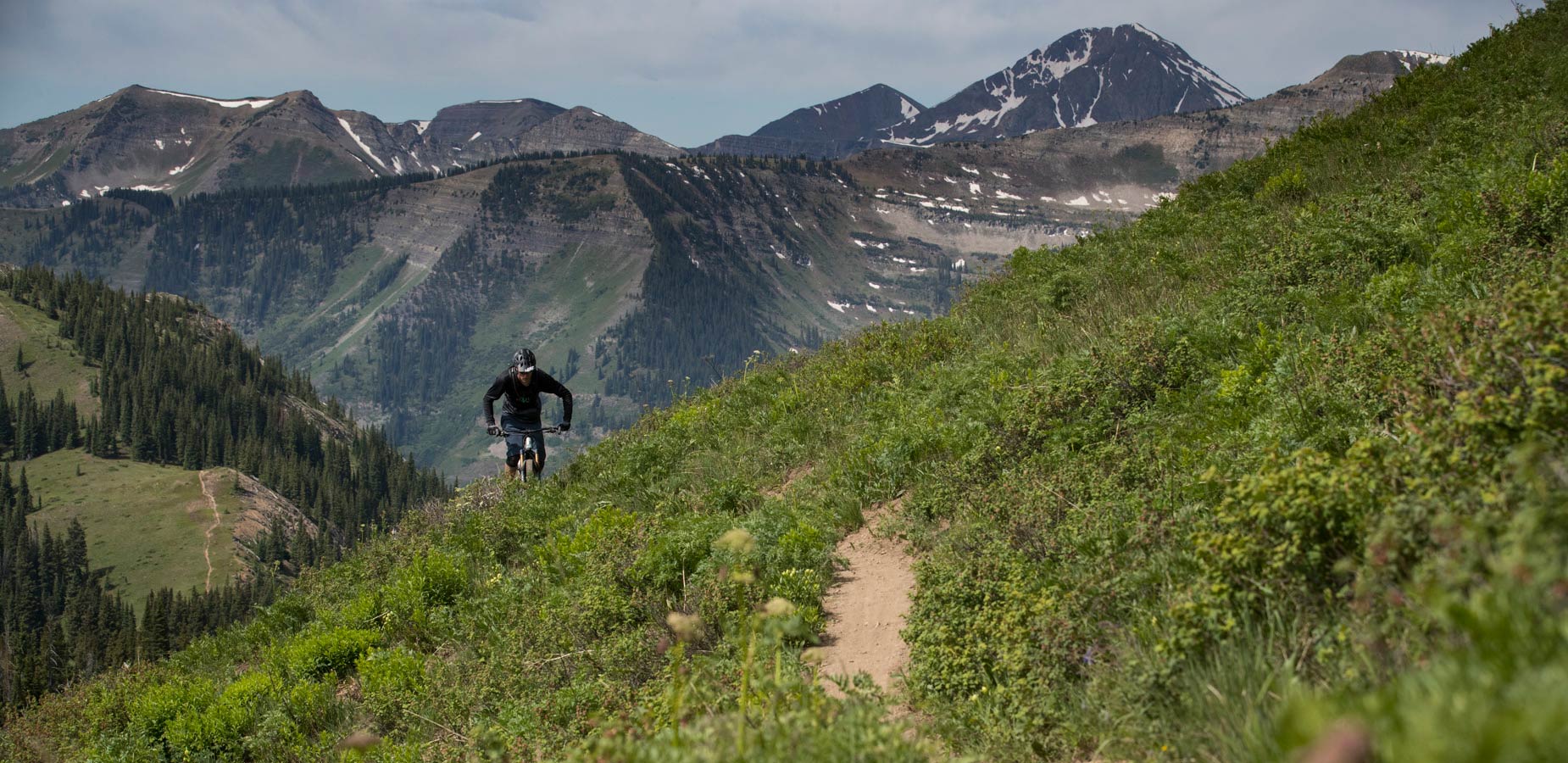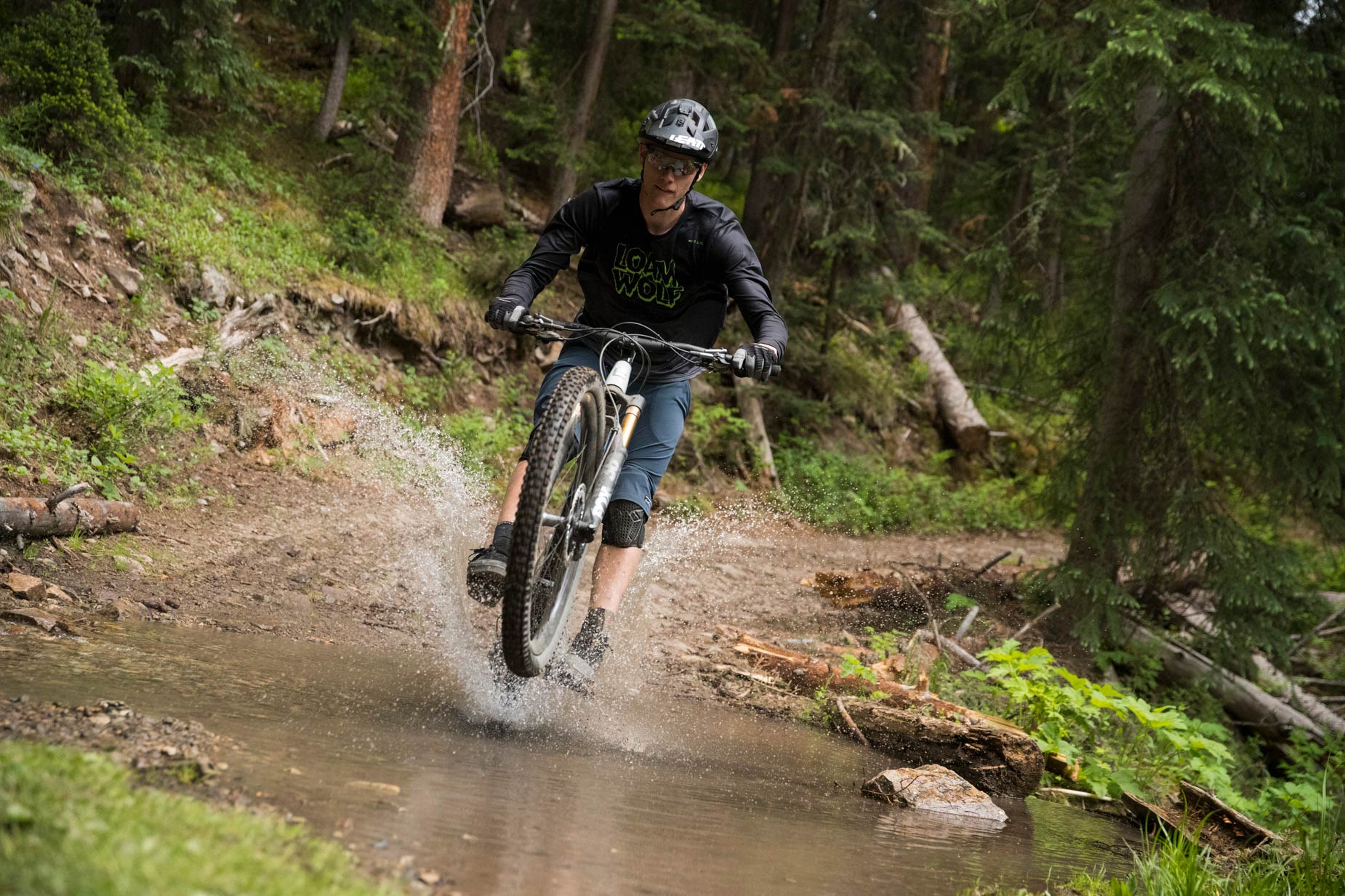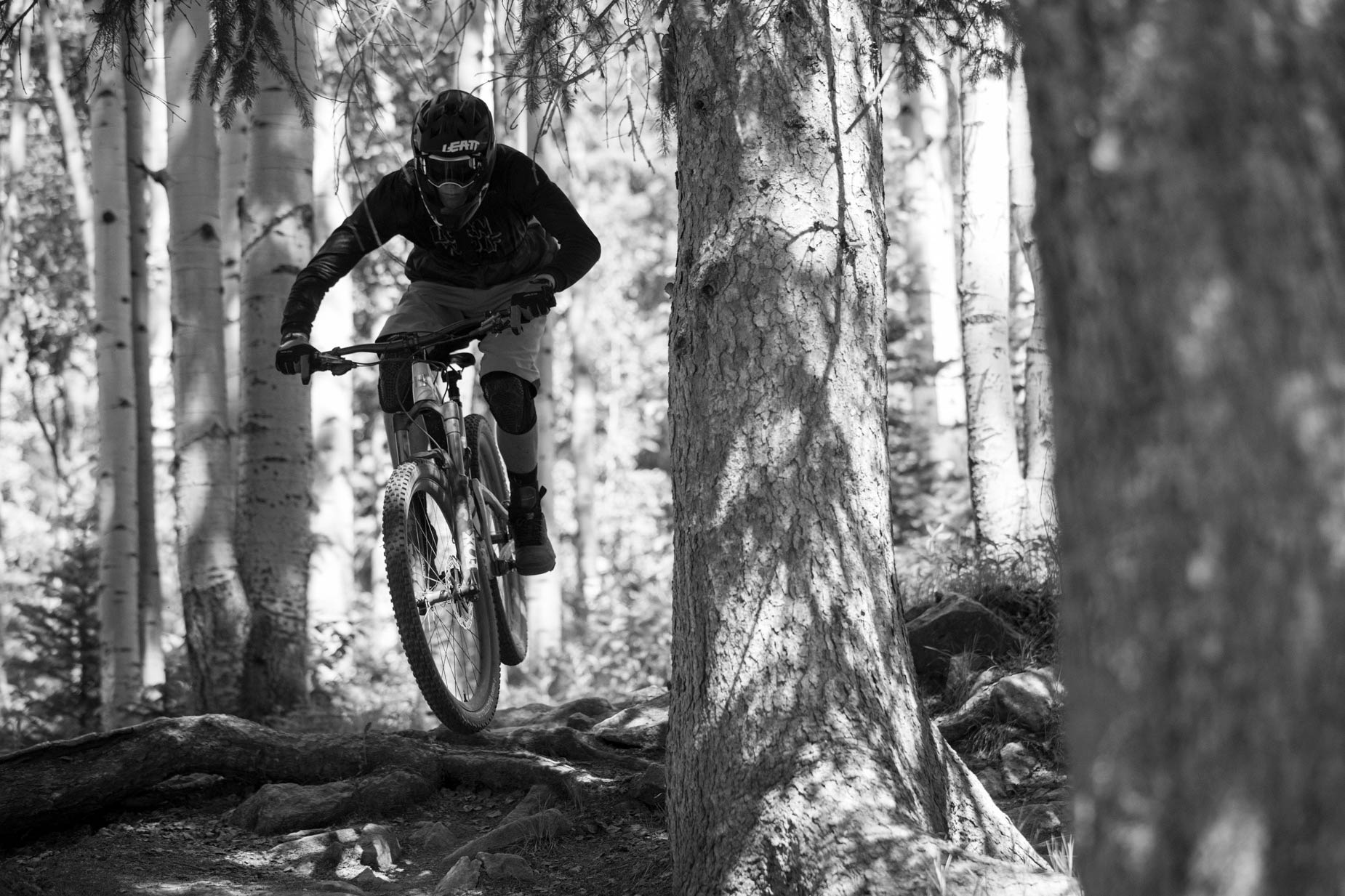First Ride
Shimano XTR 9100
Words by Chili Dog | Photos by Sterling Lorence & Chili Dog
After years of speculation, Shimano has finally answered the 12-speed call with their new XTR 9100 group. Just a couple years ago, SRAM shook up the drivetrain world with the launch of their 12-speed Eagle drivetrain. I distinctly remember thinking how absurd the pie plate sized 50 tooth cog looked in the first press release photos, but now it comes spec’d on almost every review bike we throw a leg over. That OEM dominance has elevated SRAM onto a pedestal, thanks in large part to their overwhelming slice of the MTB OEM market share. Never a company to rush something to market before it’s ready, Shimano has been carefully toiling away in the shadows, as they worked on their own 12-speed drivetrain.
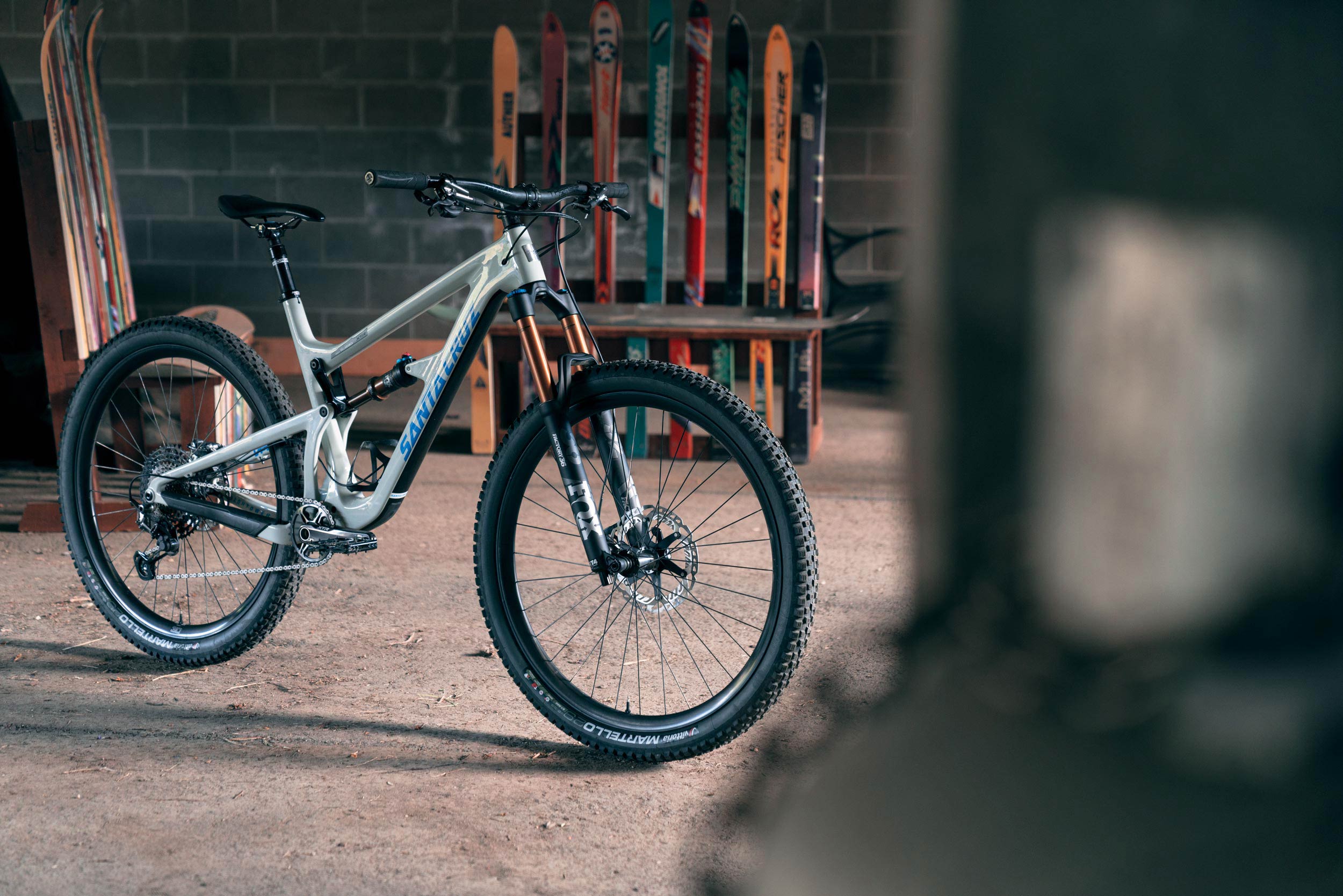
The Updates
Cockpit Ergonomics
The new XTR isn’t just a mild change compared to the old XTR group – it’s a complete redesign. Traditionally, Shimano has developed products and then used athlete input to fine-tune them to their final form. This time, and because XTR is a race-intended product, athletes were involved from the very beginning.
Starting at the cockpit, Shimano took a step back to rethink the ergonomics and adjustability of their shifters and brakes.
After extensive athlete surveys and studies about cockpit setup, Shimano came up with an adjustable system, which allows the shifters to both roll and slide in and out on the bar. The rider simply sets their preferred brake position sliding in or out of the bar, and can then slide the shifters on a track independently. The brake and shifter aren’t tied together as one un-adjustable group like SRAM, and you no longer have to play the game of putting your brakes inside or outside of the shifter. Shimano’s new dropper remote follows the same principals on the left side of the bar. The set up is neat, clean and offers much needed adjustment for riders like myself that have large hands.

Replaceable rubber grip pads were also added to the shifters and dropper remote to add grip in wet conditions. They’re a nice touch and go a long way in improving quick panic shifts when an unfamiliar trail suddenly takes an uphill turn. The double shift capability is also retained from the previous generation, but with updates. Instead of the equal force clicks the system had before, the new XTR requires just slightly more effort for the second shift, completely eliminating accidental double shifts in rough terrain.
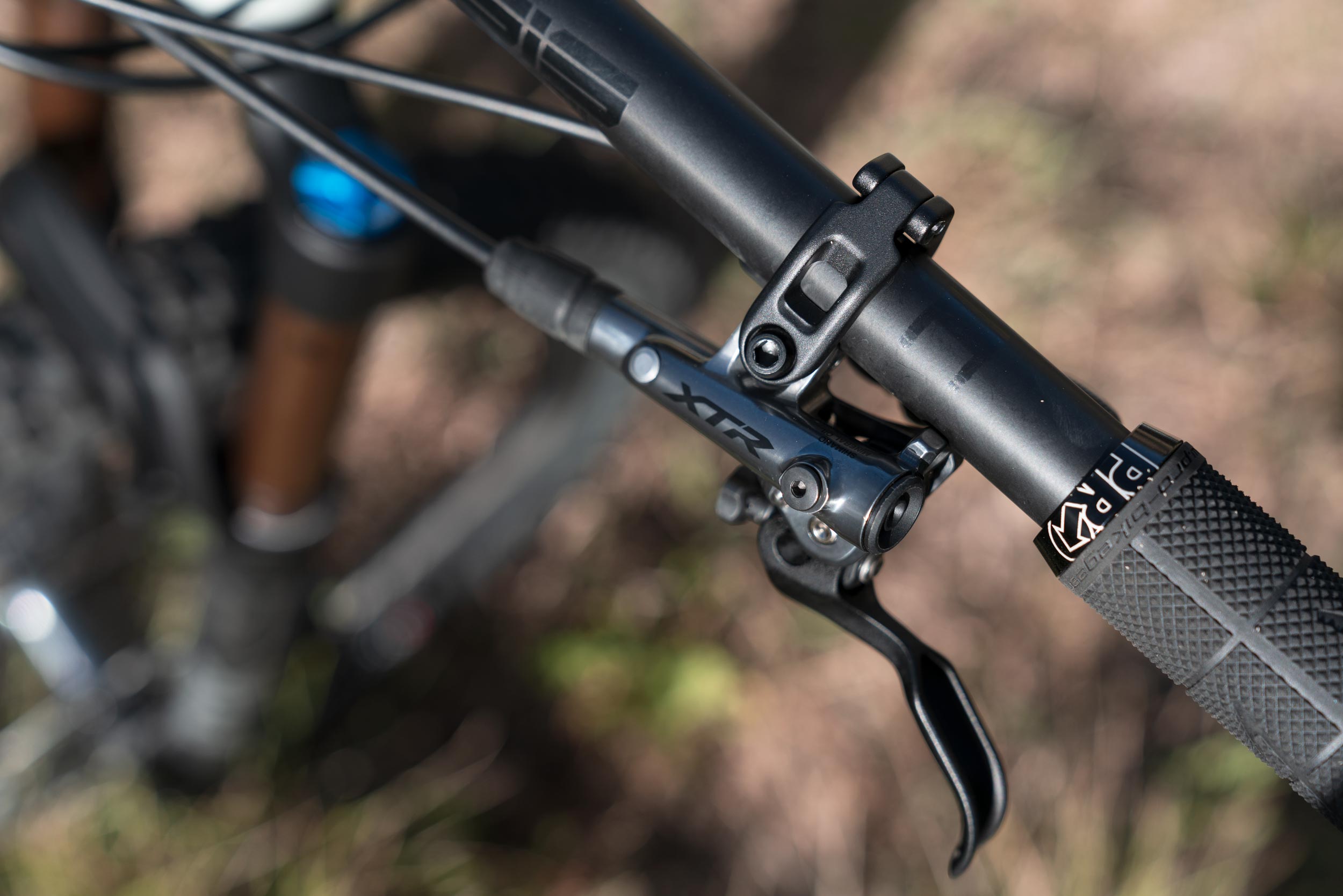
Brakes
Shimano also completely redesigned the brake levers. To improve rigidity, the levers now have two contact points with the bar: one at the clamp, and a separate point towards the lever itself. This change improves rigidity and lever feel under hard braking. Shimano also tuned the servo wave curve with a different ramp to improve lever feel. For those wondering, it does decrease the on/off feel that Shimano opponents nag about, but still retains the quintessential Shimano feel. Reach adjustments on the enduro-oriented BL-M9120 and BR-M9120 brakes we rode came in the familiar dial form.
Two brake options are offered within the XTR line: the Enduro brakes mentioned above, sport four pistons at the caliper and aluminum levers, and the XC oriented two piston BL-M9100 and BR-M9100 brakes with carbon levers.
Our time was spent on the Enduro brakes, which share pads with the Saint lineup. Shimano’s summary is that the new brakes combine Saint Power with XTR modulation and lever feel. Their creation was in direct response to enduro racers opting to ride Saint product. For the e-bike market, expect four piston XT.
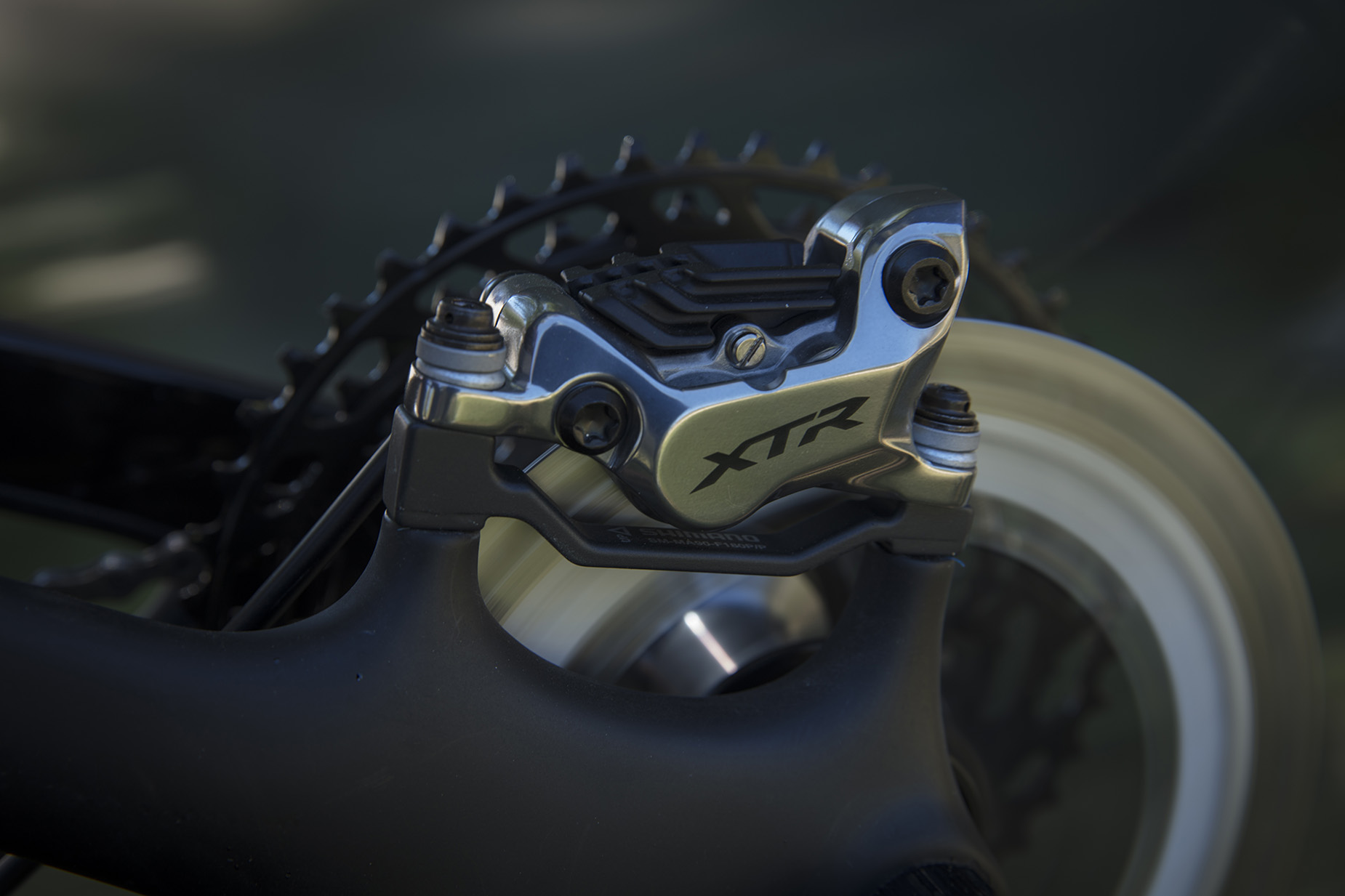
Cassette
The meat of the XTR changes are in the drivetrain itself. Once again, Shimano started at the drawing board to rethink their current design. Of course the whole reason for the redesign was to introduce a 12-speed option, but Shimano actually broke the 12-speed cassette into two variants. The first is a 10-51 tooth 12-speed Wide Range cassette that offers 510% gear range. If you’re keeping track that’s one tooth more than Eagle… take that SRAM. The second option is a 10-45 tooth 12-speed Rhythm Step that offers a 450% gear range with more even gear steps.
Despite the focus on 12-speed, Shimano’s pro enduro racers still asked for an 11-speed option to reduce derailleur cage and chain length. The 11-speed option actually uses 6 less chain links, reducing weight and chain slop in the smallest gears. A 10-45 gear spread on the 11 speed offers a 450% gear range that’s 57 grams lighter than the 12-speed, 10-51 cassette. The 11-speed XTR is compatible with both short and long cage XTR M9100 rear derailleurs.
Shimano also made significant changes to the tooth profile on all three cassettes. Downshifts into the 51-tooth cog are buttery smooth and lighting fast. To put it simply, the shift into the 51-tooth is the fastest of any pie plate sized cassette we’ve been on. Upshifts are also dramatically improved thanks to the adaptation of Shimano’s Hyperglide+.
Traditionally, the chain was only guided when shifting into the larger cogs of the cassette, but with Hypergide+ that guiding happens in both directions. The result is power going to two cogs at once during a shift, and the elimination of that “clunk” while shifting into smaller cogs. It’s something that’s especially noticeable when shifting while on the gas out of a corner.
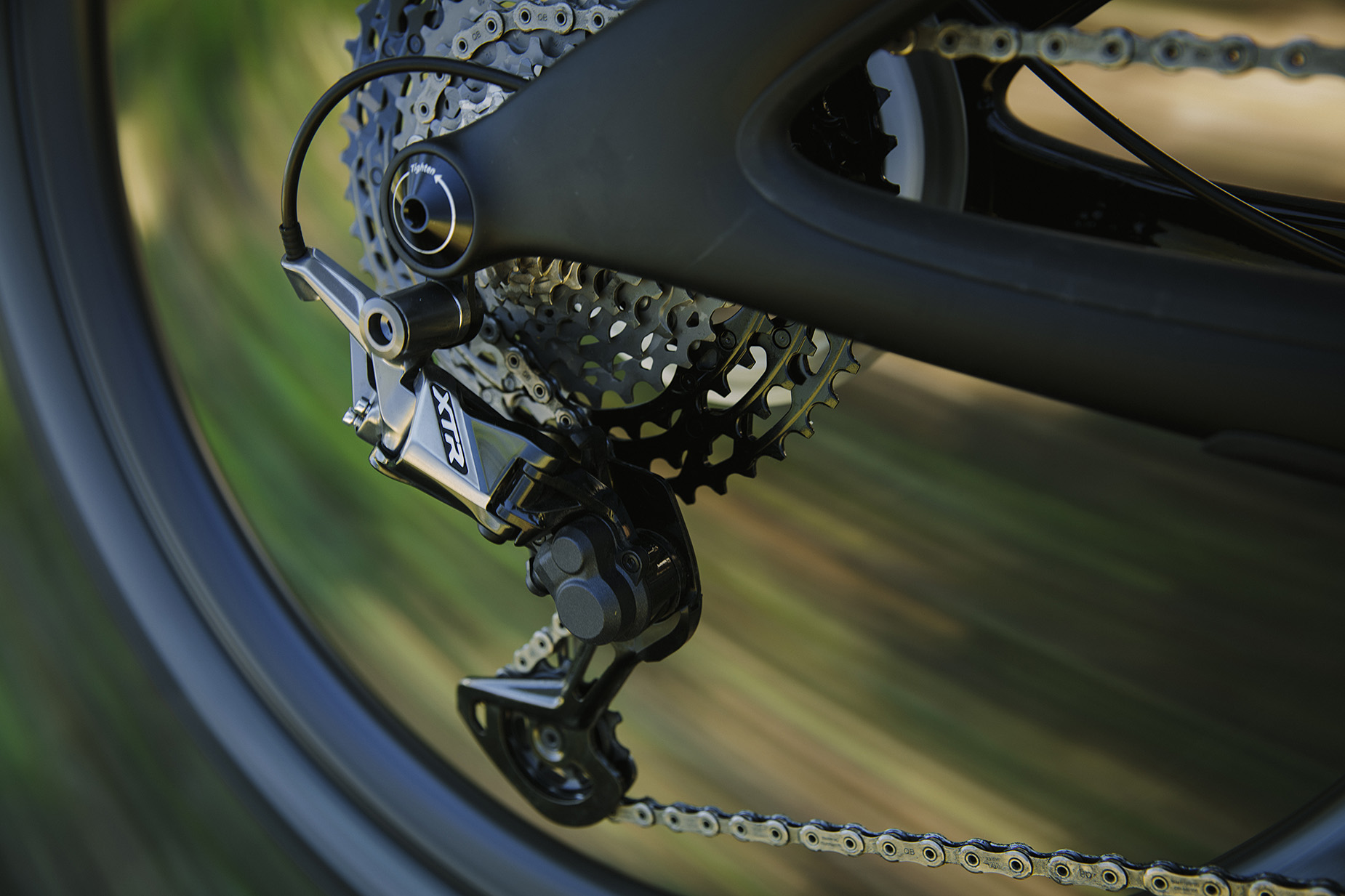
Derailleur
Three different derailleur options are available. The RD-M9100-SGS derailleur is designed for the 51-tooth 12-speed cassette, the RD-M9100-GS is designed for the 45-tooth 12-speed cassette, and the RD-M9120-GS short cage for the 11-speed cassette. Cages and parallelograms shorten as the cassettes decrease in size, with the mid cage design being more than an inch shorter than the 51 tooth variant. Small changes were made to the design to improve shift quality and chain management, and the large clutch lever still remains easy to access for repairs.
Chain
Another integral part of the smooth shifting experience on the new Shimano XTR is the chain itself. Large changes to the chain profile have been made to allow for quieter pedaling and improved performance at either extreme of the 1x drivetrain. The new profile also clings to the chain ring with even more tenacity. Noise is also greatly reduced and is immediately noticeable on the trail. It’s probably safe to call it the quietest drivetrain on the market.
Hubs
A major factor contributing to our silence on the trail is the aptly named Scylence ratchet hubs that use two internal springs to keep the ratchets separated until you pedal. In other words, they don’t make a sound when rolling along, and have almost no resistance. The new hub design was necessary to work with Shimano’s new freehub body standard. Yes there is now another freehub standard, called Micro Spline.
If you want to run the new XTR, you’ll need to lace up one of Shimano’s four different hubs. At this time, only a limited number of hub manufacturers have access to the Micro Spline freehub design, but that will change as time goes on.
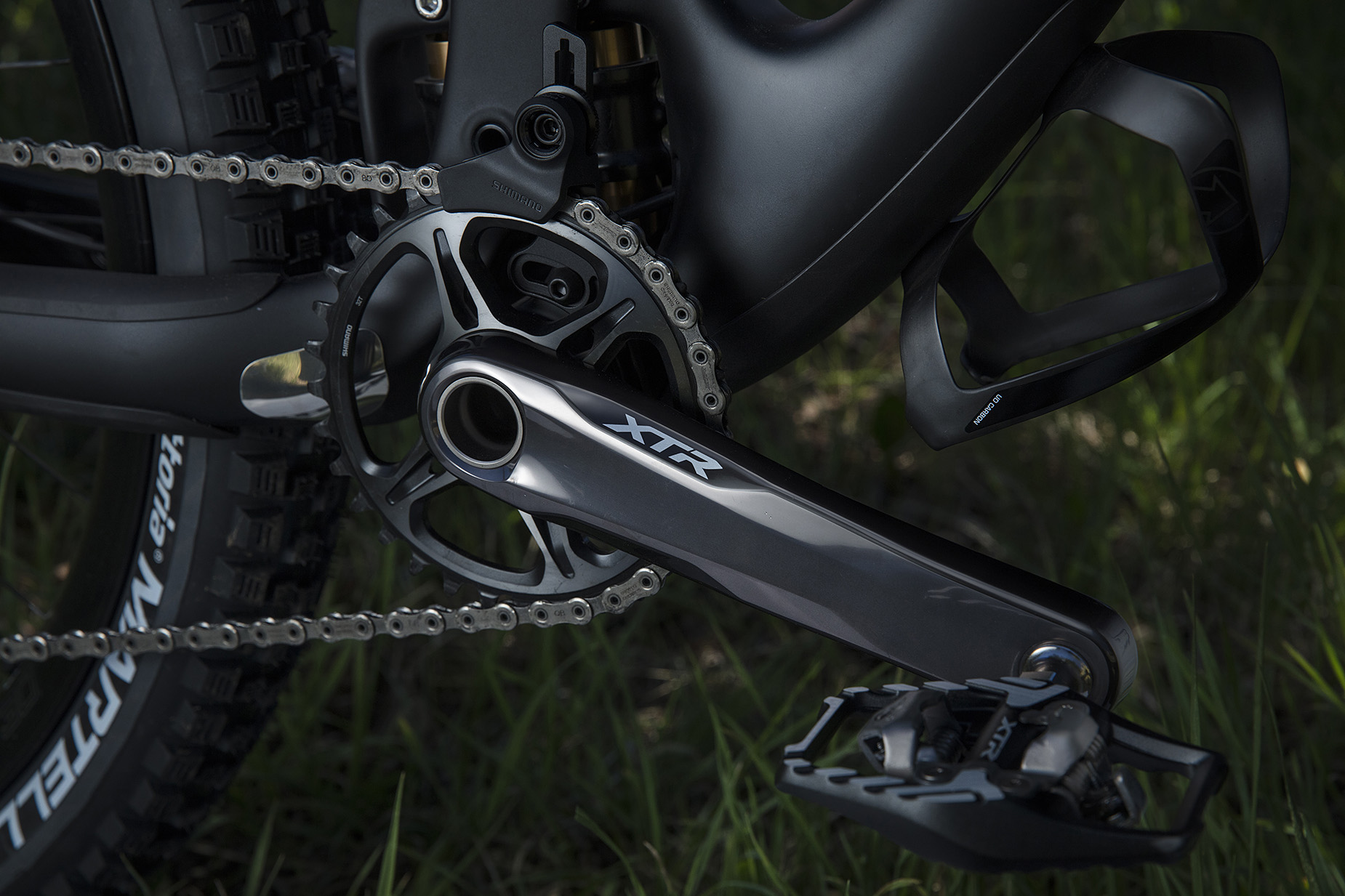
Cranks
Shimano’s new XTR cranks look familiar, but the team made several important changes to the design. First and foremost, they no longer rely on mounting bolts to secure the chain ring. Instead the system uses a lock ring and tool that ships with the cranks. There’s also no pinch bolt on the non-drive side crank arm. A threaded finger ring on the non-drive side is used to adjust BB tension and 168 or 162 millimeter Q-factors are available.
Pedals
The last part of the XTR group is the human contact point for the drivetrain: the pedals. Two pedal variants are offered, the M9100 XC pedal, and the M9120 Enduro pedal. Both options grew in width from their predecessors, and have options for riders looking to fine-tune their fit options. The Enduro pedal’s increased real-estate is a welcome change that should fit better with the current crop of clipless shoes. It also offers more surface area for hard charging riders looking to distribute the loads of aggressive riding.
A few months ago, we published Shimano’s press release detailing the updated Shimano XTR lineup. We’ll let you read that piece if you need more information on the specifics and different options within the Shimano XTR lineup, but let’s just say, we’ve been counting the days until we could ride the group since then. So let’s get on with it then…the question that’s been tugging away at us since the first word of XTR 12-speed– how does it perform, and is it better than Eagle?
The Ride
To get a feel for the new drivetrain, Shimano set us loose on the world-renowned trails of Crested Butte, Colorado. With a mix of XC, trail riding and even bike park laps, we had three days to test the new XTR in almost every trail condition imaginable. Thomas Vanderham even came along to reinforce that we all need to work on our style, and to share his insights on the development of the new XTR. Though he played a critical role, it was actually his first time riding the final production versions of several parts.
After a brief presentation on XTR where I was reminded just how hard it is to memorize Shimano’s product naming, we were able to take to the trails on an XC loop to acclimate ourselves to the new XTR’s function, and the 10,000-foot elevation. It turns out the elevation was the only thing that took getting used to. I felt immediately at home on the new Shimano.

The Cockpit
The effort that was put into the ergonomics and small details is something that can’t be understated. The controls feel natural and in the right place no matter the rider’s hand size or preferences. It’s the most adjustable single bar clamp we’ve ridden.
According to Nick Murdick, the mountain bike product manager at Shimano North America, “The idea was that, in order to buy into the idea of quicker shifting, you use the flat part of your thumb to glide forward. It’s a quick transition from gripping to shifting.” If that particular style doesn’t suit your shifting preferences, “The shifters are very flexible to accommodate many differences in riding style. The shifters can be comfortable and easy to reach whether you’re bearing down climbing, or on the power descending,” continued Nick.
Shimano still retained the dual direction shifting from the inner trigger, and the textured rubber pads on each trigger make sure you never slip a shift even in the roughest terrain. As further evidence to their attention to the smallest details, the rubber grip pads are replaceable. Another small change that sounded insignificant, but resulted in a welcome improvement was the trigger feel itself. Shimano gave the paddles a more firm “clicking” sensation, and added just enough resistance to the second shift to prevent accidental double shifts. It didn’t happen frequently, but I definitely like the new feel.
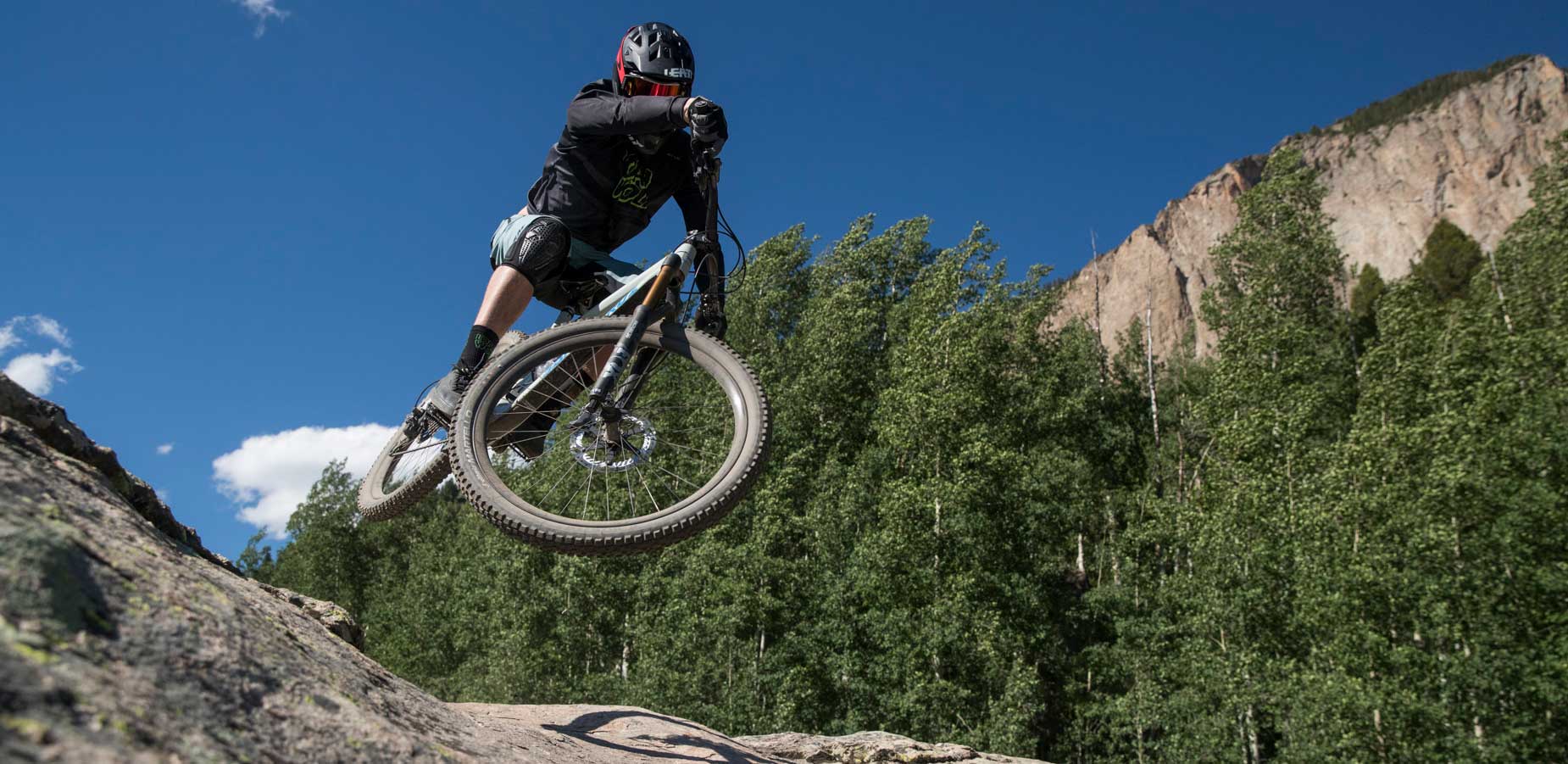
The Drivetrain
Our warm up loop for the Day One ride immediately took a turn uphill from the start, giving us a chance to sample the shifting quality under load. The elevation and lack of oxygen caused most of us to reach for the 51-tooth rear cog in exasperation. That quick hammer was more than enough to realize the precision of this drivetrain. The new 12-speed XTR has lighting fast shifts even into the extreme ranges. We would need to do a side-by-side comparison with Eagle to truly get a sense of which is faster, but it’s a safe to say the Shimano 12-speed is smoother.
The addition of Hyperglide+ is also a major component of the drivetrain’s smoothness and speed. Traditionally when shifting from a large to a small cog, the chain would suddenly drop and the bike would lurch forward. Much like in a car you would have to ease off the power on each shift. However, with Hyperglide+ you are rewarded for staying on the gas. The additional pedal pressure helps the system to power both gears simultaneously for a split second, resulting in a smooth transition. There’s still a solid shifting feel, but the heavy “thunk” and resulting jerk is now gone. It’s something that is noticed right away, but quickly fades into the experience as you ride.
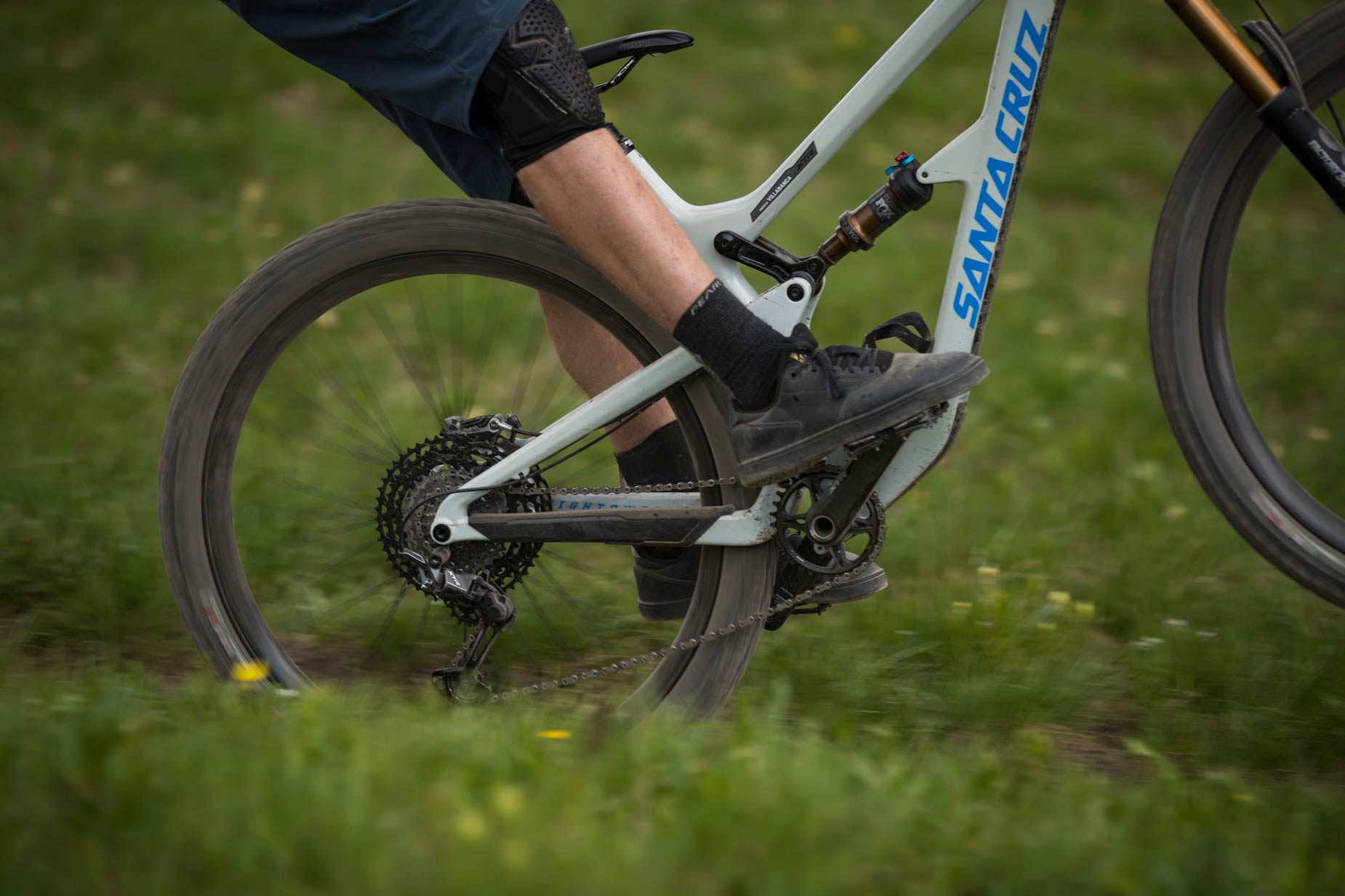
Speaking of fading away, it’s worth noting that this is the quietest drivetrain we’ve ever been on. The Sylence hubs set the stage as they literally glide without a sound, but the chain and driveline are also nearly silent as well. Nick cites the new extended interlink plate chain as a major contributing factor. He explained, “There’s two kinds of links on the chain and two kinds of teeth on the chainring. By extending interlink plate so it touches fat teeth and the skinny teeth simultaneously, it quiets vibration and improves chain retention.”
The clutched derailleur does an incredible job of controlling chain slap even in the 10-tooth cog. Over intense braking bumps or rocks, the only sound was a muffled rattle. We’ve never had a bike so silent that a delicate rattle in a water bottle cage was noticeable. Hikers beware, XTR is your worst nightmare! I’ve always used tire noise as an important indicator of traction, but with the new XTR that sense is heightened.
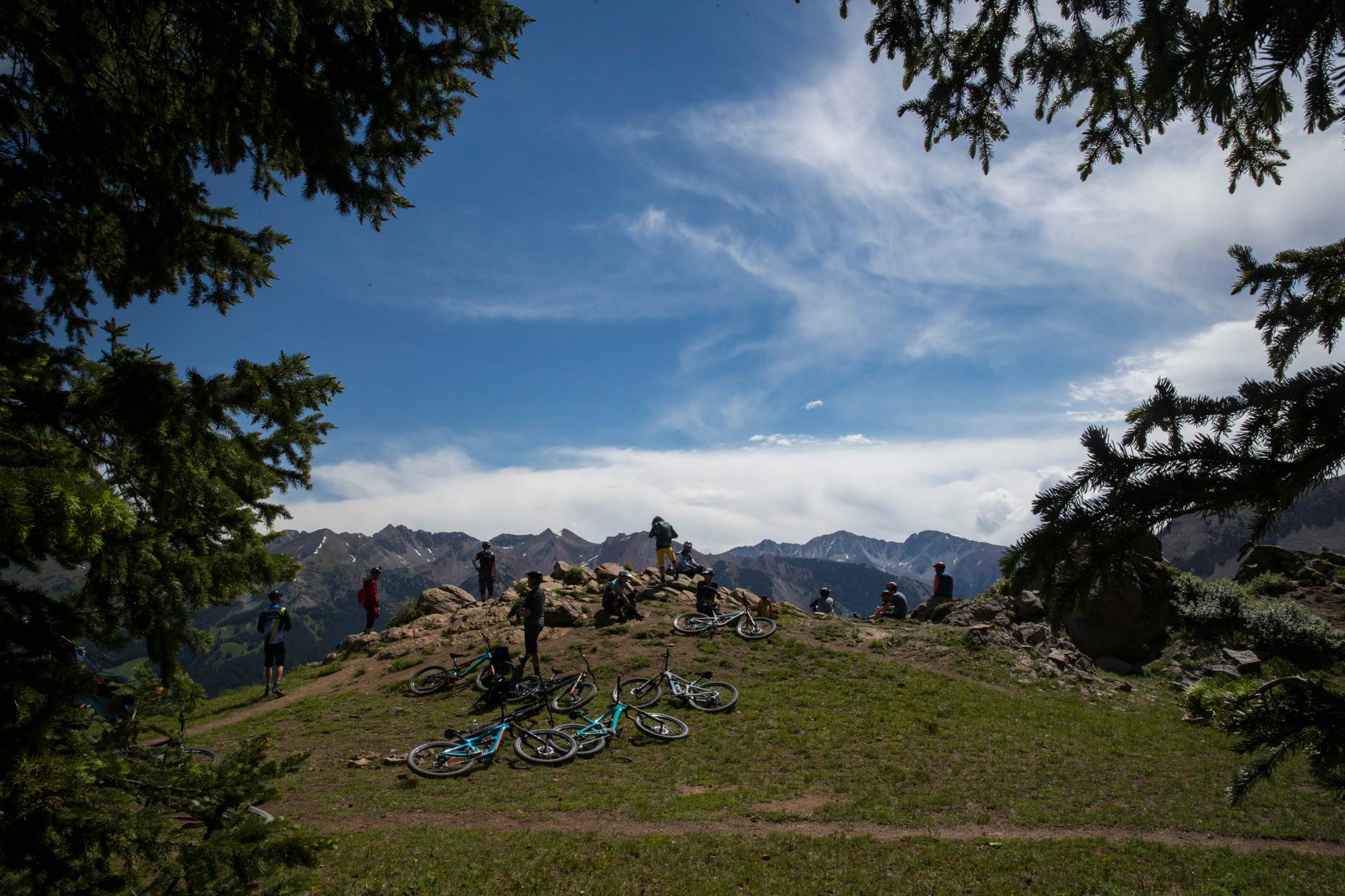
The Brakes
After our XC loop, we went on an all day epic that tested our fitness as much as it tested the abilities of the XTR group. Thousands of feet of mellow but sustained descending rewarded us with spectacular views of Crested Butte, and provided a punishing environment for the new brakes.
To say I was impressed would be an understatement. My test bike was outfitted with the four piston Enduro brakes and metallic pads. Shimano’s summary of the new brakes was XTR lever feel with Saint power and I’d say that’s a pretty accurate description to put it into easily relatable terms. Their efforts to tune the lever feel also made a large impact. Nick elaborated that, “The servo wave track has a big effect on the modulation and tune. We ended up with Saint power but a tune that’s more enduro focused.”
Fast, unfamiliar trails are one of the best places to test brakes since braking points are unknown, and a hard panic brake before an unexpected sharp corner may follow a long, fast braking section. Time and time again, I was impressed with the XTR’s ability to manage heat. At no point during the thousands of feet of descending did anyone on the trip experience brake fade. Modulation and lever feel stayed consistent, even as I stoppied into the parking lot after a grueling, steep segment of trail. Hard braking situations yielded the more uniform lever feel I’ve felt from a Shimano. Nick explained that this was because of the new dual contact point eliminating lever flex, and transferring more finger input to the pads. “It’s a very efficient design that delivers more of your power to the rotor. If you pull hard on the lever, then your engagement point is more consistent with the dual contact point on the new lever design. We also shortened the free stroke in the brake without reducing the space between the pad and the rotor.”
After our all day epic, we decided to do some bike park laps to really put the stoppers and drivetrain through their paces. Again, the XTR group performed flawlessly as I sent my Hightower test rig with reckless abandon. The silence of the drivetrain through deep braking bumps was second to none. Despite my best efforts hammering in the smallest cog, I never dropped a chain or missed a shift. Although truly steep trails and long term testing are still needed, the brakes didn’t miss a beat in Crested Butte.
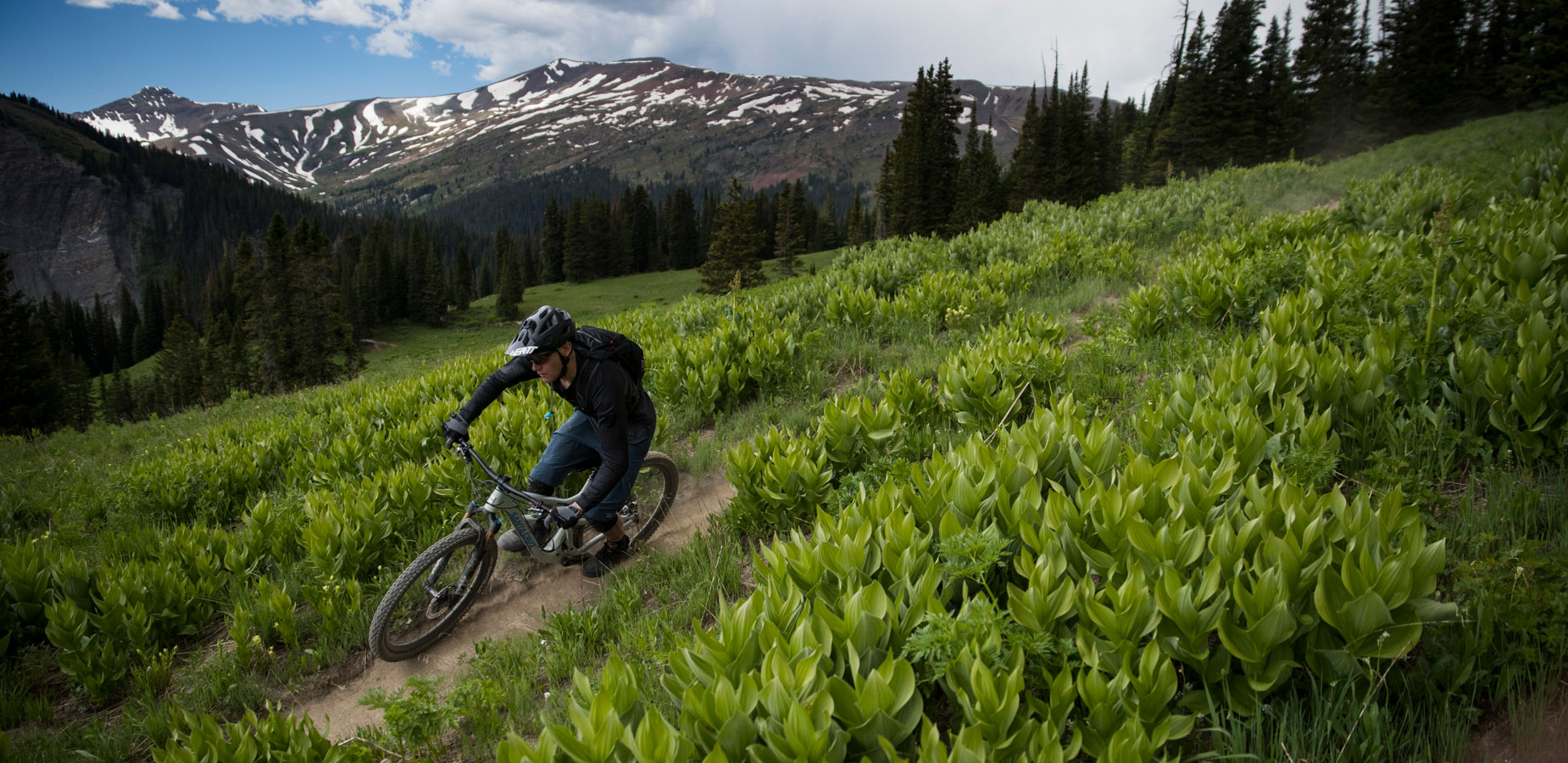
The Wolf’s Last Word
If you’ve made it this far, you most likely have only one question: Is the new XTR better than the other 12-speed options on the market? As a complete groupset of drivetrain and brakes, I would have to say, yes. As a drivetrain alone though only time will tell. Shimano summed it up best during the presentation saying, “The best bike is the one that you never have to think about while riding.” XTR is the closest I’ve ever been to that ideal. The adjustable ergonomics meant I never had to think about reaching for the levers or triggers in an unnatural place, the silent hub and drivetrain let me forget about the punishment I was giving the bike, and the smooth shifting up and down let me forget about how I was banging through gears.
Though Shimano took their time developing an answer to SRAM’s 12-speed Eagle offerings, XTR is a worthy opponent. We’re excited to put the two head to head in a long-term review to truly decide who comes out on top. Let the drivetrain wars begin.
For a full list of weights and prices, visit the Shimano XTR Website.
Leave A Comment & Win Free Schwag
Want to win some free schwag? Leave a comment and vote up the most thoughtful comments and each month we’ll pick a winner. The person with the smartest and most helpful replies will earn some sweet new gear. Join the Pack

